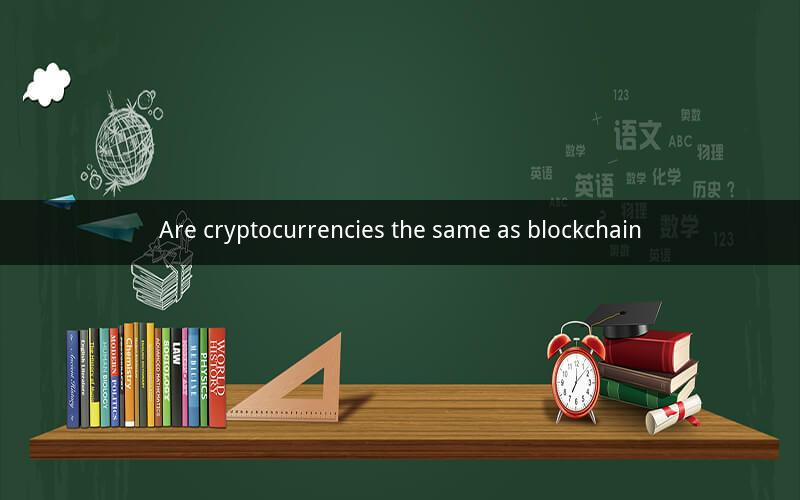
Table of Contents
1. Understanding Cryptocurrencies
2. Exploring Blockchain Technology
3. Differences Between Cryptocurrencies and Blockchain
- Cryptocurrency's Digital Nature
- Blockchain's Distributed Ledger
- Cryptocurrency's Functionality
- Blockchain's Underlying Structure
4. The Interconnection Between Cryptocurrencies and Blockchain
5. The Future of Cryptocurrencies and Blockchain
1. Understanding Cryptocurrencies
Cryptocurrencies are digital or virtual currencies that use cryptography for security. They operate independently of a central authority, like a government or financial institution. Bitcoin, the first and most well-known cryptocurrency, was introduced in 2009. Since then, thousands of cryptocurrencies have been created, each with its unique features and purposes.
The main characteristics of cryptocurrencies include:
- Decentralization: Cryptocurrencies operate on decentralized networks, meaning they are not controlled by any single entity.
- Anonymity: Transactions can be made without revealing personal information, providing a level of privacy.
- Security: Cryptographic algorithms ensure the security of transactions and the integrity of the network.
- Accessibility: Cryptocurrencies can be accessed and traded from anywhere in the world, as long as there is an internet connection.
2. Exploring Blockchain Technology
Blockchain is the underlying technology that powers cryptocurrencies. It is a decentralized, digital ledger that records transactions across multiple computers in a network. Each transaction is added to a block, and once a block is filled with transactions, it is linked to the previous block, creating a chain of blocks.
The key features of blockchain technology include:
- Decentralization: Like cryptocurrencies, blockchain operates on a decentralized network, eliminating the need for a central authority.
- Immutability: Once a transaction is added to a block, it cannot be altered or deleted, ensuring the integrity of the ledger.
- Transparency: All transactions are recorded on the blockchain and can be viewed by anyone, providing a level of transparency.
- Security: Blockchain uses cryptographic algorithms to secure transactions and prevent fraud.
3. Differences Between Cryptocurrencies and Blockchain
While cryptocurrencies and blockchain are closely related, they are not the same thing. Here are some key differences between the two:
- Cryptocurrency's Digital Nature: Cryptocurrencies are digital assets that can be used for transactions, investment, or speculation.
- Blockchain's Distributed Ledger: Blockchain is the technology that powers cryptocurrencies and other decentralized applications. It is a decentralized, digital ledger that records transactions across multiple computers in a network.
- Cryptocurrency's Functionality: Cryptocurrencies can be used as a medium of exchange, a store of value, or an investment.
- Blockchain's Underlying Structure: Blockchain is a decentralized, digital ledger that records transactions across multiple computers in a network. It is the foundation for cryptocurrencies and other decentralized applications.
4. The Interconnection Between Cryptocurrencies and Blockchain
Despite the differences, cryptocurrencies and blockchain are closely interconnected. Here's how they are related:
- Cryptocurrencies are built on top of blockchain technology, which provides the decentralized, secure, and transparent platform for their operation.
- Blockchain technology enables the creation of new cryptocurrencies and decentralized applications.
- Cryptocurrencies can be used to incentivize the maintenance and operation of the blockchain network.
5. The Future of Cryptocurrencies and Blockchain
The future of cryptocurrencies and blockchain is uncertain, but there are several potential developments to consider:
- Increased Adoption: As more people and businesses become aware of the benefits of cryptocurrencies and blockchain, adoption rates are likely to rise.
- Regulatory Changes: Governments and regulatory bodies around the world are still working to understand and regulate cryptocurrencies and blockchain technology.
- New Applications: Blockchain technology has the potential to revolutionize various industries, including finance, healthcare, and supply chain management.
Questions and Answers
1. What is the main difference between a cryptocurrency and a fiat currency?
- Cryptocurrencies are digital assets that operate independently of a central authority, while fiat currencies are issued and regulated by governments.
2. How does blockchain ensure the security of transactions?
- Blockchain uses cryptographic algorithms to secure transactions and prevent fraud. Each transaction is recorded on a decentralized network, making it nearly impossible to alter or delete.
3. Can cryptocurrencies be used as a medium of exchange?
- Yes, cryptocurrencies can be used to make purchases, send money, and trade goods and services.
4. What is the role of miners in the blockchain network?
- Miners are responsible for validating and adding new blocks of transactions to the blockchain. They are rewarded with cryptocurrency for their efforts.
5. How does the supply of a cryptocurrency affect its value?
- The supply of a cryptocurrency can affect its value. Scarcity, or a limited supply, can drive up demand and increase the value of a cryptocurrency.
6. What are smart contracts, and how do they work?
- Smart contracts are self-executing contracts with the terms of the agreement directly written into code. They run on blockchain networks and automatically enforce and execute the terms of the contract.
7. Can blockchain technology be used for voting?
- Yes, blockchain technology has the potential to be used for secure and transparent voting systems, reducing the risk of fraud and increasing voter confidence.
8. How does the decentralized nature of blockchain benefit its users?
- The decentralized nature of blockchain eliminates the need for a central authority, reducing the risk of corruption and providing users with more control over their data and transactions.
9. What is the difference between a private blockchain and a public blockchain?
- A private blockchain is controlled by a single organization or a group of organizations, while a public blockchain is open to anyone and can be accessed by anyone.
10. How can blockchain technology improve the healthcare industry?
- Blockchain technology can improve the healthcare industry by enhancing data security, improving patient privacy, and streamlining administrative processes.